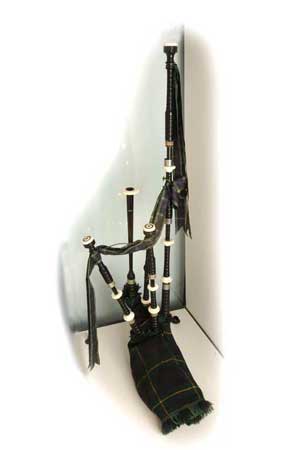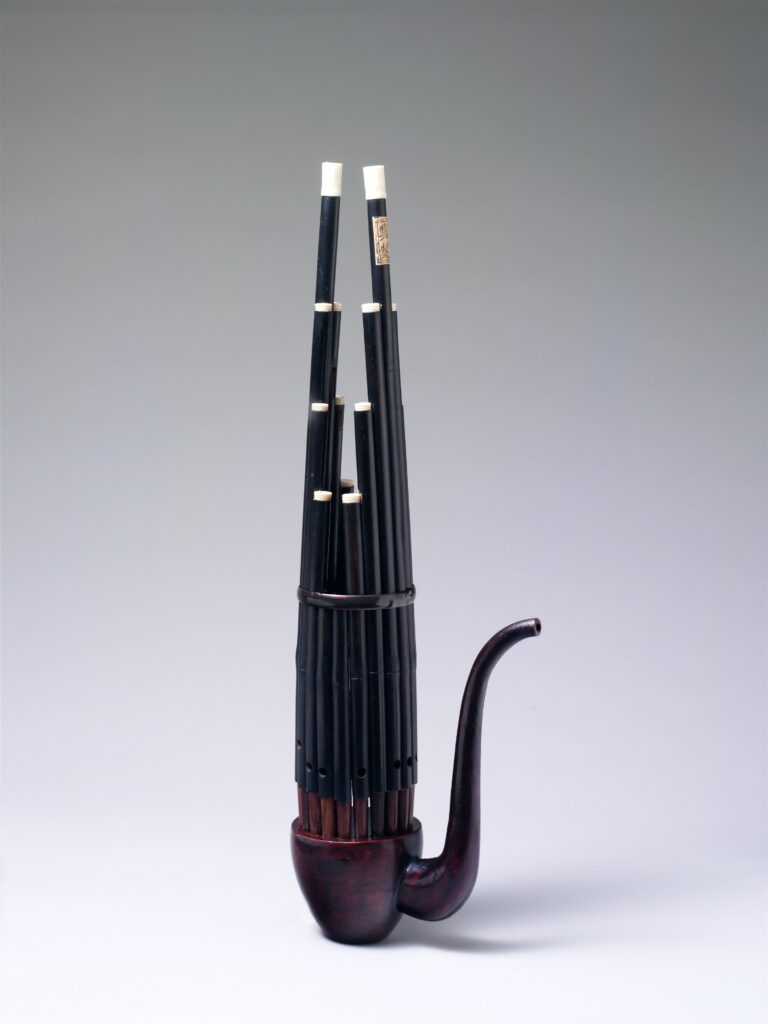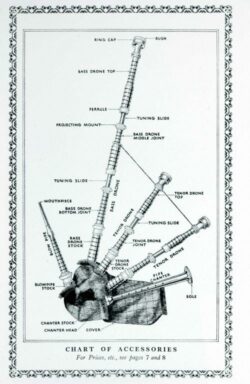When a Scottish song found a home in China
Have you ever heard Auld Lang Syne played by 423 guzhengs?
In 2009, I stood in the middle of Nanjing’s Shanxi Road Square, surrounded by hundreds of fellow guzheng players. The guzheng, or Chinese plucked zither, is one of the most typical traditional Chinese musical instruments. Everyone was playing the classic Scottish folk song ‘Auld Lang Syne’ in their hands. Auld Lang Syne, a Scottish melody echoing across a Chinese cityscape, as hundreds of silk strings carried its tune into the spring air.
At that moment, I realised this was more than a performance. It was a conversation—between cultures, between instruments, between people who may never speak the same language, but somehow share the same emotion. That day, a Scottish song found a home in China.
15 years later, I’m now living in Glasgow and on a university placement with Historic Environment Scotland. So now seems the perfect time to explore how traditional instruments from Scotland and China, though different in form and history, can carry the same song, and perhaps even the same feeling.
Through the sound of Auld Lang Syne, we’ll follow a musical dialogue between East and West.
How traditional instruments carry the same melody
Auld Lang Syne has been played around the world on many instruments.
My experience of hearing it on the guzheng is a an example of how instruments from other cultural and historical contexts can still convey the same emotional message though through different sounds and performances.
The guzheng is a plucked zither used in Chinese classical and folk music. Its strings can produce both melodic clarity and expressive slides, making it suitable for both solo and ensemble playing.
But are there other examples?
The bagpipe is a type of reed instrument that can use either single or double reeds. The Great Highland Bagpipe, that most people associate with Scotland, consists of a blowpipe, an air bag, a chanter, and several drone pipes that provide a continuous harmonic background.
Bagpipes and sheng: different shapes, shared purpose
The Scottish bagpipes were never meant for quiet rooms! Their deep, droning sound is made to echo across hillsides, battlefields, and parades. The steady background hum and sharp melodic notes are perfect for leading a crowd or marking a moment.
The sheng is a traditional Chinese wind instrument and one of the earliest known free-reed instruments in the world. It is considered the ancestor of many modern reed instruments and has influenced the development of several Western counterparts. The sheng is known for its clear, elegant sound and soft, mellow tone quality. While the sound is lighter and more intricate, it too was once used in court music and ritual ceremonies.
Both the bagpipes and the sheng are reed instruments commonly used in formal and ceremonial contexts. Though both come from very different cultures, they both arrive at similar musical expressions through wind instruments.
Suona and bagpipes: loud, proud, and symbolic

Naxi suona horns in the Yunnan Nationalities Museum (Daderot, Public domain, via Wikimedia Commons)
The suona is another traditional Chinese wind instrument. Due to its sharp and piercing sound, it is often compared to the Scottish bagpipes!
The suona is commonly played at weddings, funerals, and festivals, where it marks important transitions and expresses public emotions. Like the bagpipes, it serves as an instrument that communicates cultural meaning through sound.
The suona is often considered the loudest instrument in Chinese folk music. It carries both joy and sorrow, and when it plays, people stop and listen. Although its sound is different from that of the bagpipes, their roles are remarkably similar: both mark transitions and signal important public moments. You can easily imagine either sound leading a farewell, and making sure it will be remembered.
When music crosses borders
Why does Auld Lang Syne feel at home both in Scotland and in China?
One reason lies in the musical structure. Auld Lang Syne is based on the pentatonic scale—a five-note system commonly found in folk music traditions around the world. This scale is deeply rooted in traditional Chinese music, which allows Chinese instruments to play pentatonic melodies naturally. The same is true for many Scottish folk songs, which also follow a pentatonic framework.
Because of this shared foundation, instruments from both traditions can perform Auld Lang Syne without needing major changes to the melody. This helps explain why the song travels so easily across cultures—musically as well as emotionally. In China, Auld Lang Syne is often played at graduation ceremonies, New Year celebrations, and other moments of farewell. In Scotland and many other countries, the song marks the end of the year, closing chapters, and long goodbyes.
Words fail, music speaks
When the melodious sound of the bagpipes drifts across the beautiful mountains, what comes to mind is a peaceful, warm, and free home.
In Scotland, the bagpipes have been passed down through the generations for countless years. They represent Scotland’s traditional folk music and are an integral part of Scottish culture.
This emotional depth may help explain why Auld Lang Syne resonates far beyond Scotland. Music doesn’t erase differences. But it connects them, often more powerfully than words ever could. Whether it’s bagpipes in the mountains or 400 guzhengs in the city square, the message is the same: we remember, we say goodbye, and we move on.
Fancy learning more from our archives?
We have a range of blogs, diving head-first into Scotland’s history through a look into our archives.
You can explore 60 years of the Forth Road Bridge in pictures, travel through a history of Italian life in Scotland or slide into ice skating history.





